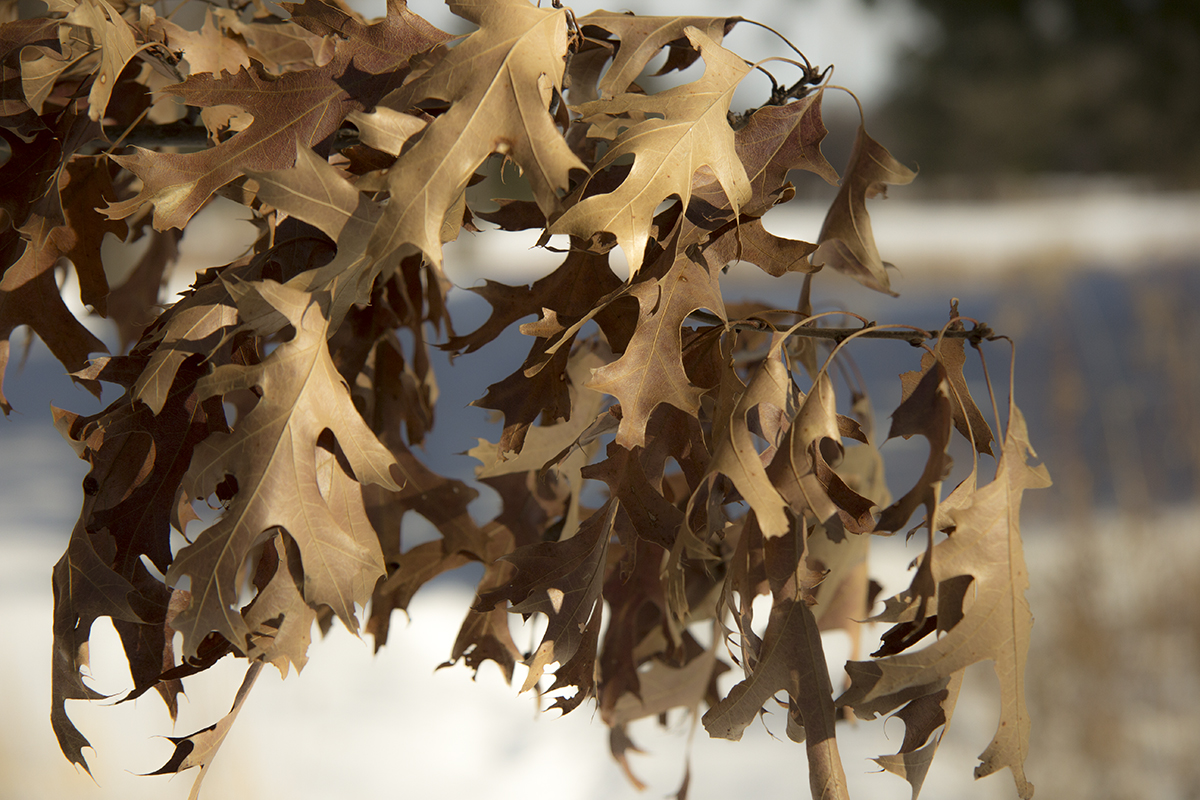I love the look of Pin Oak leaves on the trees in winter. It is as though they're saying, "What's the rush? Spring foliage won't be coming until, well, spring." So, in the process they provide us with interesting texture and color on the horizon.
I have a tree nursery. I deliver and plant balled and burlapped trees. I must say, I rarely get a request for a Red Oak or Pin Oak, the assumption being that they are Oaks, and thereby slow growing. But this is not the case in the Red Oak family. They grow as fast as anything. The White Oaks, on the other hand, grow slowly. But they live up to 200 years and more. Their cragginess, for lack of a better word, gives them a beauty all their own. They could be regarded as an ornamental tree, justifying their existence for sheer beauty alone (and not just for their utility in providing shade).
Of course the red of the dogwood gives a very nice color in late winter and early spring. Pruning your dogwood will generate new shoots, and it is the new shoots that are the most red (while the older ones turn and stay green). A good time to prune them, or cut them down so that they re-sprout, is in late winter or early spring.
Few plants get a worse rap than the Eastern Red cedar. I grow them in my nursery and can't tell you how many customers scoff at them, sometimes refering to them as "scrub brush."
Their virtues are several: they attract birds like no other tree, providing dense structure and stability for nest building. They are the only plant I can think of that appears to turn from their rusty summer color to a deeper green in the winter. We used one as a Christmas tree last year and, I swear, it turned greener after we cut it down and brought it in the house. They do best in full sun but will tolerate partial shade.
They make for a wonderful plant in a prairie, complementing the grasses and wildflowers with height and texture.



